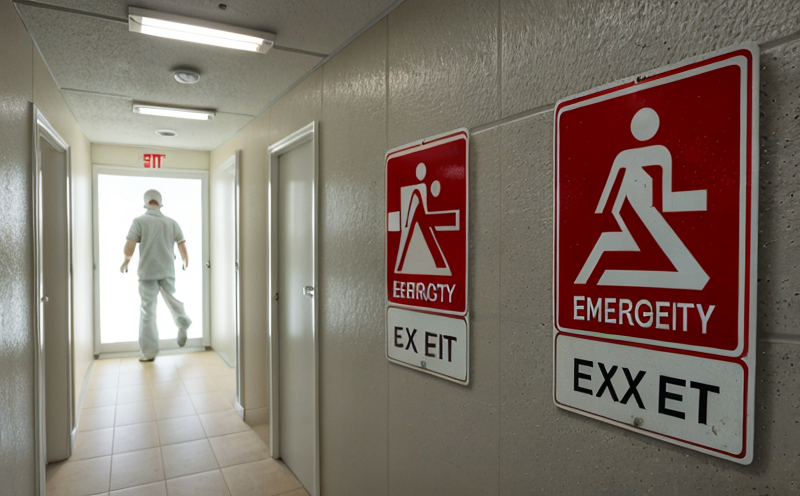Emergency Lighting Circuit Integrity Testing
The integrity of emergency lighting circuits is a critical aspect of fire safety testing. Ensuring that these systems are operational during power failures can save lives and protect property in the event of an emergency. This service focuses on verifying the circuit integrity by simulating real-world conditions, ensuring compliance with international standards such as ISO 7240-1:2005 and EN 50176.
The process begins with a comprehensive review of the current design specifications and installation plans to ensure that all components are suitable for the intended environment. This includes evaluating the type of emergency lighting, its placement, and the expected duration of operation during an outage. Once the system is installed, detailed pre-test checks are conducted to confirm that all parts function as designed.
Testing involves simulating a power failure scenario where the normal supply voltage drops to zero while maintaining the integrity of the circuit by ensuring it can sustain a minimum level of current necessary for the lights to remain operational. The test setup includes monitoring the performance parameters such as luminance, uniformity, and flicker frequency over time.
Post-test analysis is crucial in this process. It involves comparing measured values against predetermined thresholds specified in relevant standards like ISO 7240-1:2005 to determine compliance. If any discrepancies are found, corrective actions must be taken immediately to address issues before retesting takes place. This ensures that the emergency lighting systems meet all regulatory requirements and perform reliably under actual operating conditions.
Accurate documentation of test results is essential for maintaining records that can help identify trends or recurring problems within installed systems. Regular audits based on these records allow continuous improvement in terms of both product quality and operational efficiency.
Why It Matters
The importance of emergency lighting circuit integrity testing cannot be overstated given its role in safeguarding human life during critical moments when conventional power sources may fail. In environments where rapid evacuation is necessary, such as hospitals, schools, airports, and public facilities, reliable emergency lighting can make all the difference.
- Customer Impact: Satisfied customers know their buildings are safe and comply with safety regulations.
- Satisfaction: Regular testing instills confidence among stakeholders that they are adhering to best practices.
Failure to maintain proper circuit integrity could lead to non-compliance issues, potential liability claims, and even personal injury. By investing in regular inspections and maintenance programs, organizations demonstrate their commitment to public safety and corporate responsibility.
Customer Impact and Satisfaction
- Safety Assurance: Clients gain peace of mind knowing that their facilities meet stringent fire safety standards.
- Regulatory Compliance: Ensuring all equipment complies with applicable regulations reduces the risk of fines or penalties.
- Enhanced Reputation: Demonstrating proactive approach towards maintaining high levels of service quality enhances brand image and customer loyalty.
Organizations that invest in robust emergency lighting systems and rigorous testing procedures are better equipped to handle emergencies effectively. This not only protects employees, visitors, and guests but also strengthens the organization's reputation as a leader in safety practices.
Competitive Advantage and Market Impact
In today’s competitive market place, demonstrating commitment to occupational health and safety can set an organization apart from its competitors. By offering comprehensive emergency lighting circuit integrity testing services, laboratories provide clients with the assurance they need to stay ahead of regulatory changes and industry best practices.
- Market Leadership: Organizations that prioritize safety often become preferred partners for other companies looking to enhance their own reputations.
- Innovation: Keeping abreast of emerging trends in fire safety technology allows laboratories to stay at the forefront of innovation, providing cutting-edge solutions tailored specifically to client needs.
By integrating advanced testing methodologies into existing services offerings, laboratories can offer unique value propositions that resonate strongly with decision-makers. This creates opportunities for long-term partnerships and sustained growth within the fire safety sector.





